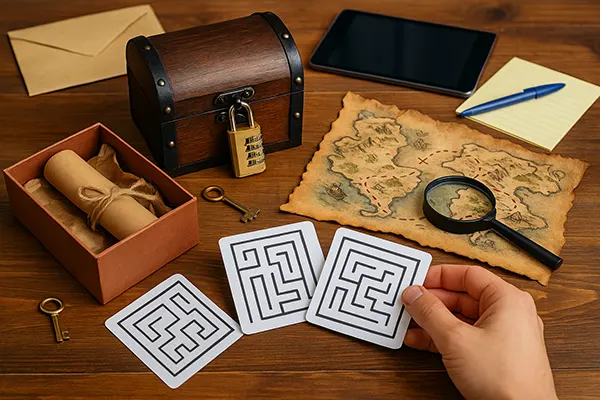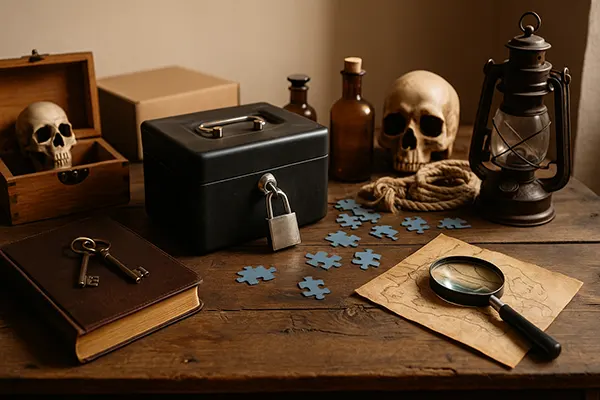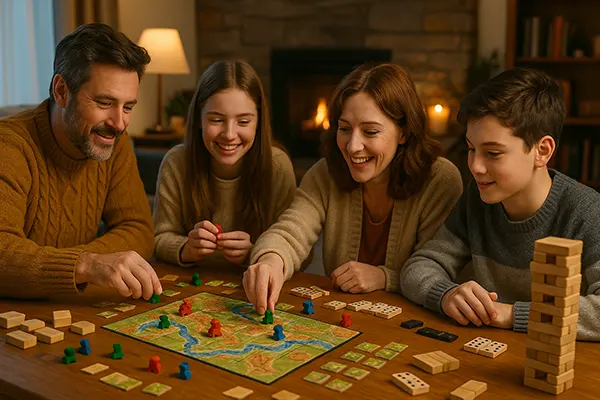
DIY Escape Room: Create a Home Adventure for Family and Friends
Escape rooms are no longer exclusive to commercial entertainment centres. Today, anyone with creativity and basic household items can create a thrilling, immersive escape game at home. Whether you’re planning a birthday, family evening, or just a unique group activity, a DIY escape room transforms your space into a mysterious adventure.
Planning Your DIY Escape Room
Before setting up props or writing clues, the first step is careful planning. Start by choosing a central theme—this could be anything from a haunted museum, a spy mission, or a treasure hunt. A well-defined storyline gives coherence to the tasks and maintains engagement.
Once the theme is established, define the main goal. Do the players need to defuse a bomb, uncover a secret code, or find a missing artefact? The clearer the objective, the more focused the experience. Then, map out your space and time limit—60 minutes is a standard, but for younger players or first-timers, 30–45 minutes might be ideal.
Next, identify which rooms or zones in your home you’ll use. Lockable drawers, under-bed spaces, or even digital codes on smartphones can become interactive components. Consider how lighting, music, and visuals can enhance immersion without complicating gameplay.
Essential Tools and Materials
Creating a home escape room doesn’t require expensive gadgets. Everyday items can become core puzzle elements. You’ll need basic stationery (paper, pens, scissors), locks (number or key), envelopes, boxes, and perhaps a smartphone or tablet for timed sequences or audio clues.
Props should match the theme. For a pirate-themed room, tea-stained paper maps, cardboard treasure chests, and plastic coins work perfectly. For a science lab style, reuse jars, syringes (no needles), and goggles. Safety and clarity are essential—players should not be at risk or confused by unclear instructions.
Print or handwrite your clues with clear guidance. Include a brief game intro and rules, such as what not to touch or open. Optionally, prepare a ‘game master’ script if someone will guide the team externally.
Designing the Puzzles and Clues
The heart of an escape room is its puzzles. Aim for variety in difficulty and type. Incorporate logic riddles, hidden objects, pattern recognition, or sequencing tasks. Ensure every clue leads logically to the next to avoid frustration or confusion.
Use red herrings sparingly—they can mislead, but too many might cause disengagement. Each puzzle should be intuitive and solvable within a few minutes. If using codes, ciphers like Caesar shifts or Morse can add fun layers, but ensure instructions or hints are available to decode them.
Test your puzzles beforehand. Ideally, get someone else to playtest and offer feedback. Watch where they get stuck or bored and adapt. Smooth progression is key to maintaining energy and satisfaction throughout the game.
Creating Logical Flow and Transitions
Organise the game flow so that clues unfold naturally. Start with simpler tasks to build confidence, then gradually increase complexity. Avoid bottlenecks where progress halts due to one unsolved puzzle by offering parallel tasks.
Use physical transitions creatively. For instance, discovering a clue in the fridge could send players to the living room bookshelf. Clear directional cues—like arrows, maps, or riddles with locational references—help maintain momentum and storytelling coherence.
Provide a backup mechanism, such as clue cards players can use if stuck. Three ‘hint’ tokens are standard. This ensures the game remains fun rather than frustrating, especially for younger participants or casual players.

Game Hosting and Replayability
On game day, set the stage 30 minutes in advance. Hide the clues in their respective locations, lock any necessary boxes, and test everything works smoothly. The host should remain neutral and avoid giving away solutions unless using official hint tokens.
Document the game layout and solution flow, especially if you plan to reuse or share it. You can even film the experience (with consent) for fun or feedback. This preparation also helps if you wish to reset the room for another group.
To boost replayability, consider modular puzzles—elements that can be swapped, replaced, or repositioned. After each game, you can redesign the story while keeping the main props intact, offering a fresh challenge without starting from scratch.
Involving Everyone and Ensuring Fun
Tailor tasks to suit all players. Include puzzles involving numbers, words, observation, and manipulation. This allows participants with different strengths—logical, visual, or tactile—to contribute meaningfully.
Assign roles like “note-keeper”, “puzzle solver”, or “searcher” if desired. Group games benefit from collaboration, and setting light roles gives structure without limiting spontaneity. For family games, ensure younger players are given puzzles they can reasonably solve or help with.
After the game, debrief the team. Share which puzzles were most fun or difficult, and let players relive the story beats. This reflection reinforces enjoyment and offers ideas for future home escape experiences.



